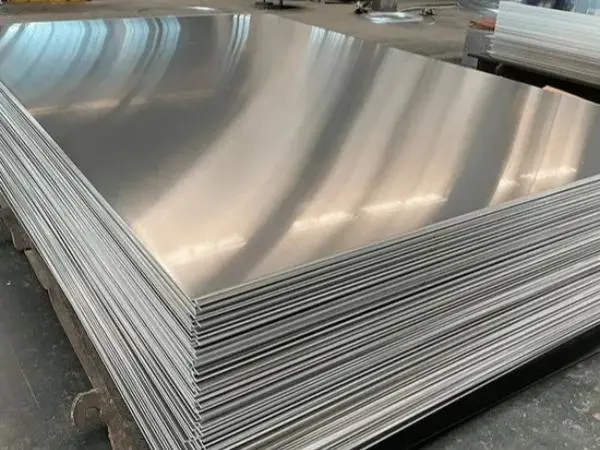- Phone0086 731 8564 8255
- E-mailsales@cscsteel-manufacturing.com
-

2024 Aluminum Plate
The 2024 aluminum plate is made from an aluminum-copper alloy, known for its high strength-to-weight ratio. It is widely used in truck and aircraft wheels, truck suspension components, and aircraft fuselage structures. However, it has limited weldability and lower corrosion resistance compared to other aluminum alloys.
Standard Cut Tolerance: -0'' to +1/8''
Precision Cutting: Available with a tolerance of ±0.005''
2024-T351 Aluminum Plate
2024-T351 aluminum plate is solution heat-treated, cold worked, and naturally aged, followed by minimal stretching to relieve internal stresses. This temper provides excellent fatigue resistance, making it a preferred choice for aerospace structural components, wing tension structures, and shear ribs and webs.
Tensile Strength Range: 30-63 KSI
Standards: Conforms to AMS QQ-A-250/4 and ASTM B209
Mill Thickness Tolerance: Varies from -0 to +.014/0.130, depending on thickness.
This combination of strength, fatigue resistance, and aerospace-grade performance makes 2024-T351 aluminum plate ideal for demanding structural applications.
Continental Steel Co., Ltd is professional aluminum steel plates manufacturer, for more details, please contact:sales@cscsteel-manufacturing.com
Chemical Composition of 2024 Aluminum Plate
Aluminum (Al): Balance
Copper (Cu): 3.8% – 4.9%
Magnesium (Mg): 1.2% – 1.8%
Manganese (Mn): 0.3% – 0.9%
Iron (Fe): ≤ 0.5%
Silicon (Si): ≤ 0.5%
Zinc (Zn): ≤ 0.25%
Titanium (Ti): ≤ 0.15%
Chromium (Cr): ≤ 0.1%
Other elements (each): ≤ 0.05%
Other elements (total): ≤ 0.15%
This composition provides excellent strength and fatigue resistance, making 2024 aluminum ideal for high-performance applications. However, it has relatively lower corrosion resistance compared to other aluminum alloys and is often used with protective coatings.
Characteristics of 2024 Aluminum Plate
1. High Strength
One of the strongest aluminum alloys, with a high strength-to-weight ratio.
Excellent for load-bearing components in aircraft, vehicles, and machinery.
2. Good Fatigue Resistance
Performs well under repeated stress and cyclic loading, making it ideal for aerospace and structural applications.
3. Moderate Machinability
Can be machined efficiently, but requires sharp tools and proper lubrication to prevent work hardening.
4. Poor Corrosion Resistance
Susceptible to corrosion, especially in marine or humid environments.
Often anodized or clad with pure aluminum (Alclad 2024) to improve corrosion resistance.
5. Heat Treatable
Can be heat-treated to enhance strength through precipitation hardening (T3, T4, T351, etc.).
6. Low Weldability
Not recommended for welding due to its tendency to crack in the heat-affected zone.
When welding is necessary, special techniques like friction stir welding are preferred.
7. Good Workability (in Annealed Condition)
Can be formed, stamped, and shaped in the O (annealed) condition, but less so when heat-treated.
8. Applications
Aerospace: Aircraft structures, fuselage, and wing components.
Automotive: High-performance car chassis and parts.
Defense: Military vehicles, weapon systems.
Machinery & Engineering: Structural components, hydraulic systems.
While 2024 aluminum plate offers excellent strength and fatigue resistance, it is best used in applications where corrosion resistance is not a primary concern or where it can be coated or protected.




